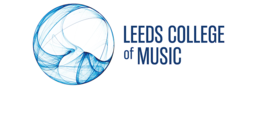When considering what route signage to re-design, the most relevant one for me was the route TO University from Student accommodation. On the first day a swarm of students (myself included) left the gates of Liberty Park, Leeds with not the slightest clue of where we were going. If it wasn't for Google maps or Uber, we would of all got a lot more lost than we did.
On some main routes there is a cycle route blue arrow, yet the parts where they are most needed (e.g: Do I turn left or right here?), there is nothing- a simple fix to add more arrows. Despite 'Universities' working to point towards the general direction, once we are in the university district, it is necessary to have differentiating signage pointing to each university individually.
Prior to designing individual Wayfinding Symbols for each university, I looked into their original identity so they are as appropriate as possible.
 |
Their current logo incorporates the famous clock tower, looming over the Parkinson Steps. This iconography is instantly recognisable as University of Leeds, despite the simplistic Black and White logo colour scheme differing from the deep green shown around campus.
|
 |
| Everything is based off the hexagonal motif, originating from the Vernon Street mosaic, emphasised by the bright fuchsia well known by the students/ prospective students. The Serif typography emphasises the historical routes of the Art School, further incorporating to their identity. |
 |
| Logo is simple and spherical, the linear smokey lines suggesting fluidity could possibly connote the waves of music. The San-Serif contrasts the Leeds College of Art branding, suggesting modern values and possibly even futuristic in appearance. |
 |
| Neither Leeds College of Art or Leeds College of Music have a particularly unusual building for their students/ prospective students to identify with, which is strange as they are the two most creative Universities within the city. With this in mind, for the 'subject specific' Universities I need to focus on the specialisms rather than the physical appearances. |
 |
| Leeds Beckett incorporate a 'flower' as their logo, which is actually ambiguous human forms wrapping around- suggesting togetherness and unity perhaps. It is interesting that this is their logo, despite having really unique buildings within their campus (such as Broadcasting Tower). |
Creating Symbols //
 |
| Possible symbol for University of Leeds, as UoL is not a specialist university, I took inspiration from their current logo and easily identifiable landmarks- being the clock tower. The simple vector style can be easily transferable into different colours, possibly the dark green of the current signage, whilst working at both large and very small/ distant scales. |
 |
| A first draft of a possible symbol for Leeds College of Music. The use of the circle is inspired by their current logo, as well as the musical lines referencing the smokey fluid lines projected throughout the entirety of their branding. Well known musical symbols are used as iconography so even the unknowing will be able to see a musical theme, thus leading them to to know it is representing Music College. |
 |
| Possible symbol for Leeds Beckett University, clearly identifying Broadcasting tower- Beckett's most identifiable landmark. However, if this was to become a final symbol confusion could arise for students trying to find other buildings, thinking that the Way finding system would only take them to Broadcasting Tower. |
 |
| To amend this, another possible resolution for Leeds Beckett could be simply using the generic logo, identifiable and well known throughout the city and by all types of students. |
 |
| Experimentation for a Leeds College of Art symbol. Incorporating the identifiable Fuchsia, alongside notable art vectors such as an easel combined with the year of establishment, paint brushes and a Henry Moore sculpture- a well known alumni. |
Inventing a new pedestrian pictogram//

As the audience for the new walking man will be students, a slightly youthful characteristic was intended by incorporating the headphones and back pack. As the target audience of the Wayfinding system will be walkers, I felt it essential to appeal to the characteristics they generally all share, such as listening to music when walking places. This will hopefully have a more engaging relationship between the signage and the target audience- as it is specialist and identifiable to/with them.

 As the audience for the new walking man will be students, a slightly youthful characteristic was intended by incorporating the headphones and back pack. As the target audience of the Wayfinding system will be walkers, I felt it essential to appeal to the characteristics they generally all share, such as listening to music when walking places. This will hopefully have a more engaging relationship between the signage and the target audience- as it is specialist and identifiable to/with them.
As the audience for the new walking man will be students, a slightly youthful characteristic was intended by incorporating the headphones and back pack. As the target audience of the Wayfinding system will be walkers, I felt it essential to appeal to the characteristics they generally all share, such as listening to music when walking places. This will hopefully have a more engaging relationship between the signage and the target audience- as it is specialist and identifiable to/with them.









No comments:
Post a Comment